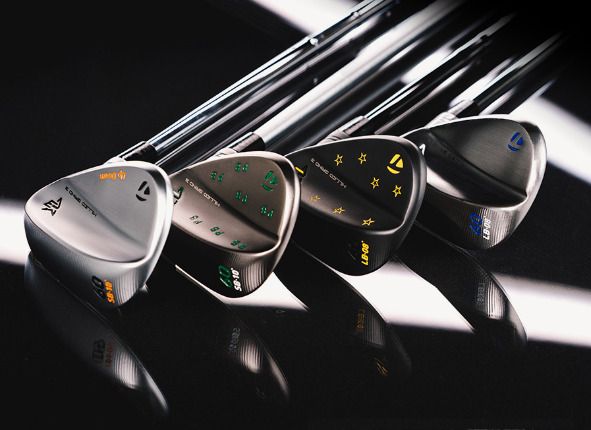What is a hole-in-one in golf
Have you ever dreamed of hitting a hole-in-one in golf? A hole-in-one, also known as an ace, is when you hit the ball from the tee into the cup in one stroke. It is one of the most thrilling and coveted achievements in golf, and it requires a combination of skill, luck and perseverance.
So, what is a hole-in-one in golf? In this article, we will explore everything you need to know about holes-in-one, from their history and statistics to their records and tips.
What is a hole-in-one in golf?

A hole-in-one, also known as an “ace,” refers to a remarkable shot in golf where a player hits the ball directly into the cup from the tee box on a par-three hole.
It means that the golfer successfully completes the hole with a single stroke, skipping the fairway and bypassing the putting green. It is the perfect shot that every golfer dreams of making.
The Origin and Evolution of Holes-in-One
The term hole-in-one dates back to the late 19th century, when it was first used in newspapers and magazines to describe the feat. The first recorded hole-in-one was made by Young Tom Morris, a Scottish golf legend, in 1869 during the British Open.
Since then, holes-in-one have become a part of golf lore and tradition, with many stories and legends surrounding them.
Some of the most famous holes-in-one in golf history include:
- Gene Sarazen’s ace on the 15th hole at Augusta National in 1935, which helped him win the Masters
- Tony Jacklin’s ace on the 16th hole at Royal Lytham & St Annes in 1969, which clinched the Ryder Cup for Great Britain
- Tiger Woods’ ace on the 16th hole at TPC Scottsdale in 1997, which ignited a frenzy among the spectators
- Jon Rahm’s ace on the 16th hole at Augusta National in 2020, which he made after skipping the ball across the water
Holes-in-one are usually celebrated with cheers, high-fives and hugs from fellow golfers and spectators. Some golfers also have rituals or superstitions for making or marking a hole-in-one, such as buying drinks for everyone at the clubhouse, keeping the ball or club as a souvenir, or getting a tattoo or plaque.
The Odds and Factors of Holes-in-One
How likely are you to make a hole-in-one in golf? The answer depends on many variables, such as your skill level, the length and difficulty of the hole, the weather and course conditions, and of course, your luck.
According to Golf Digest, the average odds of an amateur golfer making a hole-in-one are about 12,500 to 1. For a professional golfer, the odds are about 2,500 to 1. For a low-handicap golfer, the odds are about 5,000 to 1.
However, these odds can vary significantly depending on the specific situation. For example, the odds of making a hole-in-one on a par-3 hole are much higher than on a par-4 or par-5 hole.
The odds also depend on the distance of the hole, with shorter holes being easier to ace than longer ones. The average distance of a hole-in-one is about 150 yards for men and 120 yards for women.
Some of the factors that can influence your chances of making a hole-in-one include:
- Your swing speed and accuracy
- Your club selection and ball type
- The wind direction and speed
- The green slope and firmness
- The pin position and hole size
- The bounce and roll of the ball
The Records and Rarities of Holes-in-One

While any hole-in-one is an impressive feat, some are more remarkable than others. Over the years, golfers have set and broken various records and achieved some rare types of holes-in-one that defy belief. Here are some of the most notable examples as recorded by PGA Tour Guide:
- The longest recorded hole-in-one was made by Mike Crean in 2002 at Green Valley Ranch Golf Club in Denver. He hit his driver 517 yards on a par-5 hole that was downhill and downwind.
- The youngest recorded hole-in-one was made by Coby Orr in 1975 at Littleton Golf Course in Colorado. He was only two years old when he hit his driver 103 yards on a par-3 hole.
- The oldest recorded hole-in-one was made by Gus Andreone in 2014 at Palm Aire Country Club in Florida. He was 103 years old when he hit his driver 113 yards on a par-3 hole.
- The most holes-in-one in a single round was four, achieved by Patrick Wills in 2015 at Laurel Hill Golf Club in Virginia. He aced four par-3 holes with distances ranging from 127 to 185 yards.
- The most holes-in-one in a career was 59, achieved by Mancil Davis between 1967 and 2007. He was nicknamed “King of Aces” for his prolific record.
- The rarest type of hole-in-one is a condor, which is when you ace a par-5 hole. This has only been recorded five times in golf history, usually with the help of a sharp dogleg or a high altitude.
How to Achieve Your Own Hole-in-One
If you want to join the exclusive club of golfers who have made a hole-in-one, you will need to practice your game, choose your shots wisely, and hope for the best. Here are some tips to help you increase your chances of scoring an ace:
- Play more often and on different courses. The more you play, the more opportunities you have to make a hole-in-one. Playing on different courses also exposes you to different hole layouts and challenges.
- Improve your short game and iron play. Most holes-in-one are made with irons, so you need to work on your swing speed, accuracy and consistency with these clubs. You also need to improve your short game skills, such as chipping, pitching and putting, to get closer to the hole.
- Study the hole and plan your shot. Before you tee off, you should analyze the hole and decide on your strategy. Consider the distance, wind, slope, pin position and hazards. Choose the right club and ball for the shot and aim for the center of the green or the safest spot.
- Trust your instincts and have fun. Don’t overthink or stress about making a hole-in-one. Just relax, enjoy the game and trust your instincts. A hole-in-one is a rare and lucky event, so don’t let it become an obsession or a frustration.
Conclusion
A hole-in-one is one of the most exciting and rewarding experiences in golf. It is a testament to your skill, luck and perseverance as a golfer.
Whether you have made one or not, you can always learn from the history, statistics and records of holes-in-one and strive to improve your game. Remember, a hole-in-one is not impossible, but it is improbable. As golf legend Jack Nicklaus once said, “The harder I work, the luckier I get.”







